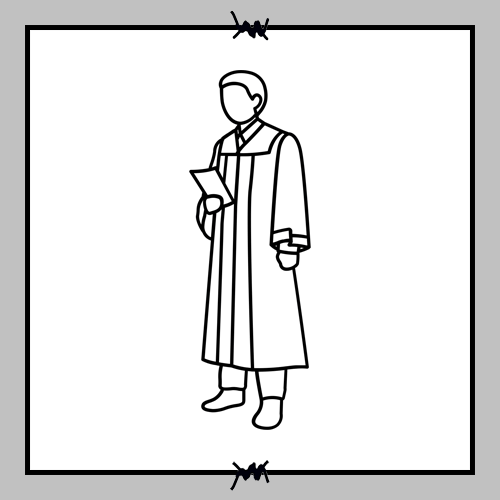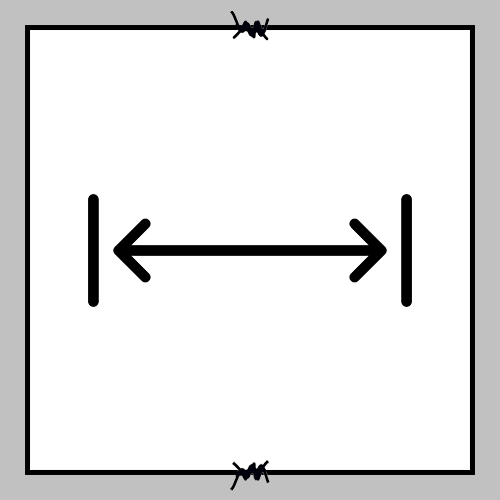There are four principle sentencing models used by criminal justice systems around the world, with some adopting a combined approach. This page examines the sentencing practices of eight countries, including procedure, the role of victims, sentence types, whether mandatory minimums are used, and diversion programs. These countries were selected for geographic diversity and are not representative of all criminal justice system typologies.


Indeterminate
A judge has discretion to impose an individualized sentence with a minimum and maximum range of imprisonment. Early release may be granted after review by a judge or parole board. The primary goal of indeterminate sentencing is rehabilitation; the offender is incentivized to cooperate in the rehabilitation process to earn a shortened sentence.
Determinate
A judge must impose a single fixed term. Sentence modification is usually not permitted.
Presumptive/Structured Guidelines
Sentencing guidelines are implemented to limit judicial discretion and reduce disparity in sentencing. They are typically established by the legislature or by a commission established by the legislature. Guidelines may be mandatory, or judges may adopt guideline recommendations at their discretion.
Mandatory Minimums
Certain crimes mandate a set minimum number of years of incarceration. A judge or prosecutor typically has little or no discretion to impose a lesser sentence.
Sentencing Practices Around the World
Below is a description of sentencing practices in eight countries selected for their geographic diversity. These countries are not representative of all existing types of criminal justice systems.
Argentina
Sentencing Process
Argentina uses indeterminate sentencing model. The presiding judge is responsible for sentencing and the sentencing hearing takes place after conviction.
Victim Participation
Victims are permitted to join a criminal proceeding as “subsidiary prosecutors” with certain rights to participate in the trial and sentencing process.
Sentence Types
- mandatory minimums used
- incarceration
- intermittent prison (weekend prison—inmate serves sentence during weekend, enabling weekday employment)
- semi-imprisonment (day or night prison—inmate incarcerated for part of the day)
- parole
- work release
- suspended sentences
- home detention
- community service
- no death penalty
Diversion Programs
For certain minor and nonviolent offenses, offenders may be diverted to drug treatment tribunals. In these tribunals, offenders who have substance abuse issues are sent to participate in rehabilitation programs. If the rehabilitation program is completed successfully, their conviction is expunged.
Parole/Early Release
For sentences of more than three years, offenders may be released on parole after serving two-thirds of the sentence.
For sentences less than three years, offenders are eligible for early release after serving one year.
Parole and other forms of conditional early release are not available for certain offenses including aggravated homicide, sexual assault, and torture followed by murder.
Egypt
Sentencing Process
Egypt has a determinate sentencing model. The penal code and criminal laws set forth minimum and maximum penalties for each offense, and the presiding judges have discretion to issue sentences within this range. A single presiding judge decides the sentence for minor offenses and misdemeanors. A three-judge panel decides the sentence for felonies. There is not a separate sentencing hearing.
Victim Participation
Victims do not participate in criminal trials unless they file a claim for civil damages related to the crime. Victim participation in a criminal trial is limited to proof of damages suffered.
For minor offenses, the victim is permitted to reach voluntary settlements with defendants which require the court to dismiss the claims against the defendant.
For other offenses, the court has discretion to accept the voluntary settlement between the defendant and the victim and to render a more lenient or suspended sentence.
Sentence Types
- mandatory minimums used
- penal servitude (hard labor)
- incarceration
- fines
- deprivation of rights and privileges (military decoration, government employment, etc.)
- probation
- alternatives to incarceration (available for minor offenses and juvenile offenders—include home detention, parent or guardian supervision, rehabilitation, community service, placement in a health or medical facility)
- death penalty
Diversion Programs
Prosecutors have discretion to issue a fine for minor offenses that do not carry a term of imprisonment, provided certain specific criteria are met.
Parole/Early Release
Offenders may be released on parole if they meet certain criteria, including serving two-thirds of their sentence with good behavior.
France
Sentencing Process
France uses an indeterminate sentencing model. Before 2014, there was not a separate sentencing hearing. New legislation in 2014 authorized the trial judge to issue sentence in a separate hearing, after learning more about the offender. The trial judge makes an initial sentencing decision. After the initial sentence is pronounced, a separate sentencing judge (juge d'application despeines) determines the terms and conditions of sentence and monitors the case, decreasing the sentence for good behavior (or removing a sentence reduction for bad behavior). The juge d'application despeines can modify the sentence based on the offender’s personal circumstances, before sentencing and while sentence is being served.
Victim Participation
The victim does not formally participate in the sentencing process. The trial and sentencing judges are required to consider the interests of the victim when assigning punishment.
Sentence Types
- mandatory minimums used
- incarceration
- probation
- semi-liberté (must spend each night in prison but permitted to go to work during the day)
- Restitution or fines
- electronic monitoring
- community service
- forfeiture or restriction of certain rights
- suspended sentences (with or without conditions)
- no death penalty
Diversion Programs
Prosecutors are considered part of the career judiciary in France. Prosecutors can divert certain cases from the courts and independently impose a warning, mediation, reparation, financial penalty, or community service.
If the suspect admits guilt, the prosecutor can issue compositions pénales which impose a financial penalty or community service. Compositions pénales do not count as a conviction but do prevent prosecution for the same offense and are part of an individual’s criminal record.
Parole/Early Release
The French system stresses individualized sentencing and grants sentencing judges wide discretion to tailor a sentence to the offender. As part of the ongoing monitoring process, the juge d'application despeines keep track of offenders’ rehabilitation and are permitted to consider the evolution of the offender’s situation when determining the release date. The judge has authority to commute short prison sentences to noncustodial sentences before the sentence is served.
Japan
Sentencing Process
Japan follows a determinate sentencing model for the majority of offenses. Indeterminate sentencing is used for juvenile offenders. No separate sentencing hearing is conducted. Although Japan does not have sentencing guidelines and judges have ultimate discretion in sentencing, prior court precedents (called sentencing standards) influence sentencing. A single, professional judge determines sentence for lesser offenses. A three-judge panel issues sentence for midrange and serious crimes. For very serious offenses, both trial and sentencing are adjudicated by a lay/professional judge panel (saiban-in). Six members of the public are selected at random to serve as lay judges with three professional judges. Prosecutors do not officially participate in sentencing, but courts consider, and often adopt, their sentencing recommendation.
Victim Participation
Crime victims are permitted to participate in criminal proceedings. They may sit behind the prosecutor and ask her questions about the proceeding. Victims are also permitted to question witnesses and the defendant and to present an opinion and recommendation as to guilt and sentence.
Sentence Types
- mandatory minimums used
- incarceration
- suspended sentences (common for relatively minor offenses)
- probation
- fines
- death penalty
Diversion Programs
Prosecutors can decide to suspend prosecution if an offender admits guilt and expresses remorse.
Parole/Early Release
Offenders are eligible for parole after serving one third of their sentence.
New Zealand
Sentencing Process
New Zealand follows an indeterminate sentencing model. The legislature sets maximum penalties and types of sentences available for offenses, but gives little guidance as to appropriate sentencing levels. Judges have wide discretion to determine the appropriate sentence and decide on a sentence at a separate hearing from trial. They are guided by appellate decisions, statements from the defense, the prosecution and any potential victims, as well as presentence reports. The presiding judge is responsible for sentencing and hands down a sentence at a separate hearing after trial.
Victim Participation
Victims have a right to provide the court with a victim impact statement and in certain types of cases to read their statement in open court. Victims also have the right to be kept informed at many stages of a criminal case. Judges consider victim impact statements when determining an appropriate sentence.
Sentence Types
- mandatory minimums used
- Incarceration
- Preventative detention (only for serious offenses where life imprisonment is not an option, including sexual offenses; after prisoners are released on parole, they are managed by the Corrections Department for the remainder of their lives and can be recalled to prison at any time)
- Home detention
- Community detention (movements restricted after a curfew time)
- Community based rehabilitation programs
- Intensive supervision (requires offenders to attend programs to address issues that led to offending)
- Community work
- no death penalty
Diversion Programs
A diversion program is available for first time offenders who have committed less serious offenses and for young offenders. The police operate the program and have the discretion to offer diversion. The diversion program enables an offender to avoid a conviction by offering reparations to the victim (in the form of an apology letter or compensation) or by making a donation or doing community service.
Parole/Early Release
The New Zealand Parole Board makes the decision as to whether an offender is entitled to early release. Offenders are eligible for a hearing with the Board after serving a set portion of their original sentence. The Board will consider submissions made by the victim, the offender, supporters of the offender, and corrections staff. The Board’s primary consideration is community safety and it will also consider the likelihood of further offending and the nature or seriousness of possible future offenses.
South Africa
Sentencing Process
South Africa follows a determinate sentencing model for the majority of offenses. If the crime is very serious and the defendant is designated a “dangerous criminal,” the judge may impose an indefinite sentence. These are essentially life sentences without parole that are reviewed by the court every 25 years or sooner.
Victim Participation
Victims have a right to be heard during the sentencing hearing by making a statement or giving evidence. Victims are also permitted to make submissions to the parole board when an offender’s case is up for review.
Sentence Types
- mandatory minimums used, but judges may depart from mandatory minimums if “satisfied that substantial and compelling circumstances exist which justify the imposition of a lesser sentence.”
- incarceration
- fine
- community service orders
- correctional supervision (probation)
- caution and discharge
- compensatory order
- parole
- suspended sentence
- no death penalty
Diversion Programs
Diversion programs are available for first-time offenders and those charged with petty offenses.
Diversion programs for youth offenders are intended to prevent recidivism, based on restorative justice principles, and require the offender to accept responsibility and make amends.
Probation officers have the discretion to recommend diversion and the responsibility to monitor and implement diversion orders.
Prosecutors have the ultimate say in whether charges will be withdrawn against an offender. They also have the authority to overrule a probation officer’s recommendation.
There are several different types of diversion programs: education and training, community service, victim-offender mediation, and family counseling.
Parole/Early Release
Offenders are eligible for early release for certain types of offenses.
Determinate sentences: Offenders are eligible for parole after serving a designated portion.
Indeterminate sentences: There is no early release, but the court must bring the offender back for resentencing at least every 25 years.
Sweden
Sentencing Process
Sweden has a determinate sentencing model which is structured by statute. The sentencing model includes detailed guidelines and specific sentencing criteria to be considered when determining the type and length of punishment. There is no separate sentencing hearing, but the sentencing decision is made after trial by a mixed panel of judges (three lay and one professional). Lay judges participate when the sentence is reviewed on appeal. The defendant’s personal circumstances, probation report, and prior criminal history are all considered. The prosecutor is permitted to provide an opinion as to sentence, but the court has final authority.
Victim Participation
At trial, the victim is permitted to testify, examine witnesses, and present further evidence for the court to consider.
Sentence Types
- mandatory minimums used
- incarceration
- non-prosecution (warnings)
- fines
- suspended sentences
- community service
- probation
- treatment orders
- no death penalty
Diversion Programs
In certain circumstances, prosecutors can decide on a penal order or waiver of prosecution instead of bringing charges. A penal order permits the prosecutor to impose a small fine in lieu of charges. The use of penal orders has been expanded to include offenses that may result in imprisonment. A prosecutor may also decide to waive prosecution after a suspect has been indicted. The waiver of prosecution is noted in an individual’s criminal record even though it is not a sanction. A waiver of prosecution can be withdrawn under certain circumstances.
Parole/Early Release
Early release is uncommon. Sentences can be reduced only when the government grants clemency. Clemency is granted only in exceptional circumstances and can take the form of a reduced sentence or pardon. Life sentences are reviewed after 10 years and can be converted into a sentence for a set period of time. After an individual has served two thirds of his or her sentence, he or she is conditionally released. Conditional release is not available for short prison sentences combined with probation or for life imprisonment.
United States
Sentencing Process
Federal: At the federal level, a determinate sentencing model, structured by sentencing guidelines, is used.
At a separate sentencing hearing after trial, judges must calculate offenders’ sentence range using the guidelines but are not required to issue sentences within the guidelines. Most judges issue sentences within the guidelines range. If a sentence outside the guidelines range is appealed, the appellate court will review the sentencing judge’s stated reasons for departure from the guidelines. The judge determines the sentence after hearing from the defendant, prosecutor, and probation and pretrial services. The crime victim also has a right to be heard. States: Sentencing regimes vary by state. 33 states maintain a primarily indeterminate sentencing model while 17 states use a primarily determinate model. The judge issues the sentencing decision at a separate hearing after hearing from the prosecution and the defense. In about half of all states, legislation requires state probation services to provide evidence-based reports as part of the sentencing process.
Victim Participation
Federal: Probation officers assess the impact of the crime on the victim and file a Victim Impact Statement with the court. Victims have a right to be heard during a sentencing hearing.
States: Most states give victims the right to attend and participate in criminal proceedings (including trial), but victims may not interfere with the defendant’s rights and court procedure.
Sentence Types
- mandatory minimums used
- incarceration
- probation
- supervised release (home detention and electronic monitoring)
- fines and restitution
- community corrections (halfway houses)
- death penalty
Diversion Programs
Federal: Diversion programs are available for certain minor offenses and for offenders who do not have two or more prior felony convictions. Participants are supervised by the U.S. Probation Service and upon successful completion of the program are either not charged with a crime or, if already charged, have those charges dismissed.
States: There are 37 states that have implemented general diversion programs. Many states also have specialized programs including for substance abuse, mental health, veterans, and domestic-relations issues.
Parole/Early Release
Federal: A judge may modify a sentence in very limited circumstances, such as to grant compassionate release. Inmates may receive a limited number of days off for good behavior.
States: In many states, even those with determinate systems, prisoners are eligible for parole as a form of early release after serving a set amount of the original sentence. Approximately 16 states have abolished discretionary parole.
